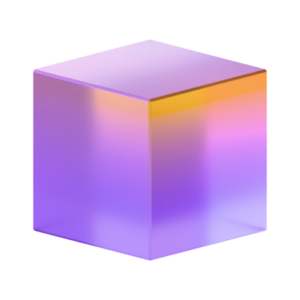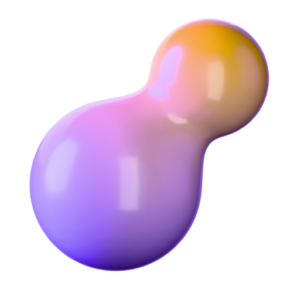LET’S MAKE
THE WEB
FUN
Add interactivity to your online service and engage users more effectively. Games and gamification offer innovative ways to attract customers and enhance the user experience.
Where can gamification be applied?
Our jQuest™ game platform provides a powerful and reliable environment for creating games and interactive elements like tests, quizzes, surveys, and raffles, all designed to make user experiences fun and memorable.

For marketing
Gamification brings a new level of interaction to campaigns and makes your brand memorable. Quizzes, surveys, and games engage your audience, increase user commitment, and help collect valuable data to support your marketing efforts. To make your campaign as effective as possible, we offer:
- Quizzes and Surveys 🎯
Encourage your audience to test their knowledge and make choices – while collecting valuable insights into their interests. - Spin-the-Wheel and Prize games 🎲
Offer the chance to win rewards and deals, engaging users and encouraging them to explore your products. - Custom games for campaign needs 🎮
Need a unique game for a product launch or a gamified element for your campaign? We design and create entirely new game concepts tailored to your objectives.

For education
Gamified elements make learning more fun and effective. Quizzes, tests, and interactive stories help communicate complex topics in a simple way and motivate learners to participate more actively.
- Quizzes and Tests 📝
Engage your audience by offering educational and entertaining content. Through quizzes, surveys, and tests, users can test their knowledge and learn new things. For example, personality or career tests not only captivate users but also provide them with a fresh perspective on the content. - Interactive Stories 📖
Let users influence the flow of the story – every choice opens a new path to explore. - Custom Educational Games 🌐
We can design and develop comprehensive gamified learning environments, combining diverse tasks and games tailored specifically to your educational needs.

For content creation
Gamification helps you craft interactive and engaging content that captures users’ attention and makes your message memorable. One of the most effective tools is online quizzes, which offer users a fun way to learn and test their knowledge – making your message easy to digest and helping participants learn almost effortlessly. Various gamified elements, like point systems, achievements, and storytelling, can also enrich your content and make it more appealing to your target audience.
- Quizzes and Surveys 📝
Create interactive content that lets users test their knowledge while deepening their understanding of the topic. - Tests and Games related to articles 🎮
Allow users to participate in personality or knowledge tests related to your article’s topic – boosting reader engagement and making content more participatory. - Custom gamified elements 🌟
We design tailored gamified elements for your brand and goals, enhancing your content and creating an immersive experience.

For events
Gamification brings a new level of energy and interaction to events. Various games, quizzes, and challenges inspire participants to move, collaborate, and engage, leaving a memorable impression. Gamified elements like leaderboards, team-based games, and storytelling add a spirit of competition and community.
- QR Code games and Quizzes 📱
Scan QR codes to instantly access games on your phone – an easy and fun way to engage participants. - Checkpoint tasks and mini-games 🎯
Set up various stations with mini-games around the event space and track results on a live leaderboard. - Team games and collaboration 🤝
Work together to complete challenges – fostering a sense of community and teamwork.
Interested?
Fill out the form below or book a free 45-minute brainstorming session with Monica!
FAQ
Gamification refers to the use of game mechanics and elements, such as point collection, achievements, challenges, and competition, in non-game contexts like websites, services, or learning platforms. Its goal is to motivate and engage users to perform certain actions, such as purchasing, learning, or staying engaged with content for longer periods. The principle behind gamification lies in the brain’s dopamine system, which is activated when we achieve something or experience joy – the same mechanisms that make games exciting and addictive.
The principles of gamification have been used for a long time in various promotional techniques, such as coupons and rewards. While it has long existed in physical contexts, its significance has grown in the digital world. Gamification combines progress tracking, rewards, and tasks that make an experience meaningful and motivating, encouraging users to return to the service repeatedly.
Gamification differs from games in that, while games are standalone products designed to provide comprehensive entertainment through storytelling, rules, and objectives, gamification adds game elements to non-game contexts. The goal of gamification is to make another activity – like learning, shopping, or using a service – more motivating and attractive. Games aim for the joy of play and a holistic experience, while gamification leverages game elements to motivate and guide users to perform desired actions. The main difference is that gamification uses game elements to enhance motivation and engagement in non-game contexts, while the primary goal of games is entertainment and the joy of play.
The cost of a game project varies based on its scope, requirements, and objectives. A simple game or gamified element, like a quiz or spin-the-wheel, can be created quickly and cost-effectively. More complex game projects, however, require additional resources and a larger budget.
Factors that influence pricing:
Concepting and Planning: Defining the game’s structure and objectives.
Development and Programming: Technical implementation, including coding, animations, and integrations.
Graphic Design: Creating the visual elements of the game, such as characters, backgrounds, and the user interface.
Testing and Optimization: Ensuring high-quality performance and a bug-free user experience through thorough testing.
Maintenance and Updates: Managing the game’s placement, updating content as needed, and ensuring ongoing development and functionality.
Our jQuest platform includes ready-made gamification modules like leaderboards, spin-the-wheel games, quizzes, and tests. These modules allow you to create cost-effective, fully customized games that match your brand. The project price starts at €2700, with a monthly license fee for jQuest starting at €99. The license includes access to the admin panel, content management tools, the ability to clone games, data, and analytics.
Interested in a jQuest demo?
Book a free session here for a comprehensive introduction.
Gamified learning games make acquiring knowledge more enjoyable and effective. Interactive elements engage and motivate users, making it easier to absorb and retain information.
Gamification can enhance the user experience, boost engagement, and drive sales. When users find gamified elements rewarding, they actively participate, which can lead to longer website visits, increased customer loyalty, and more purchase conversions.
The jQuest™ platform enables the creation of a variety of games, such as quizzes, tests, surveys, spin-the-wheel games, and challenges, all of which can be customized to meet the client’s specific objectives.
Yes, each game can be designed to match your company’s brand and objectives. You can also independently manage the content through the jQuest™ platform.
Yes, games from the jQuest™ platform can be embedded into any website, regardless of its technology or platform.
The jQuest™ platform’s dashboard stores user gameplay data, allowing you to analyze user behavior, performance, and interests. This data can be utilized in marketing and service development, among other applications.
Yes, gamification can be utilized in B2B environments, for example, to boost sales, train teams, or deepen customer relationships. Gamification makes complex processes more engaging and easier to understand
The most important aspect is understanding the motivations and needs of your target audience. It’s also crucial to set clear objectives for gamification, such as user engagement, enhanced learning, or increased sales, and choose gamification elements that support these goals.
KIINNOSTUITKO? JUTELLAAN.
Ota yhteyttä
"*" indicates required fields
